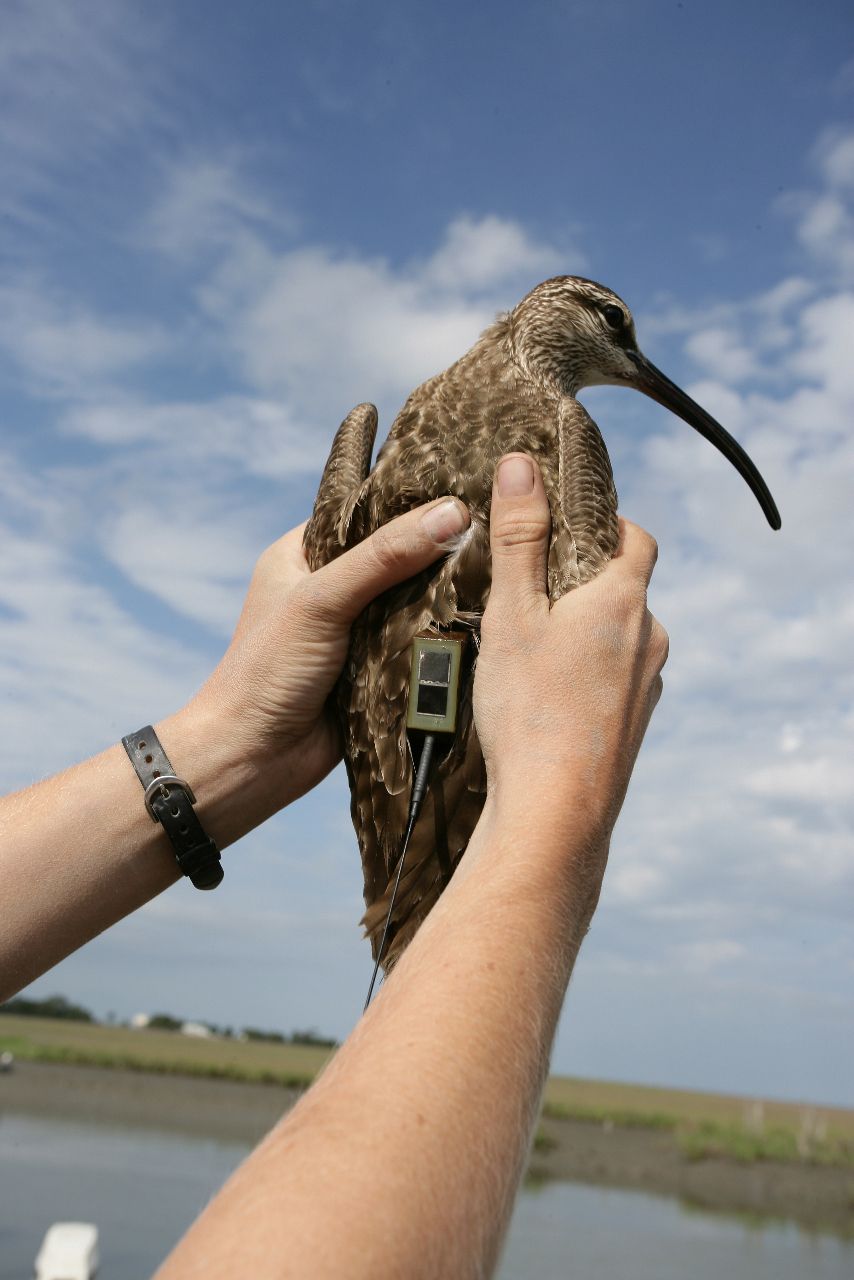Whimbrels Migrate Thousands Of Miles, Only To Be Gunned Down

This Research in Action article was provided to LiveScience in partnership with the National Science Foundation.
Whimbrels, a type of small shorebird, are tough, skillful and canny fliers, routinely taking on non-stop migration flights of a few thousand miles.
A consortium of bird researchers from the College of William & Mary track their migrations — from high Arctic breeding grounds to wintering areas in South America and the Caribbean — by fitting the extreme fliers with lightweight, solar-powered transmitters.
The scientists have found that the considerable flight and navigation skills of whimbrels don't make them invulnerable. All four whimbrels currently being tracked successfully migrated through or around Hurricane Irene and Tropical Storm Maria, but two of them were gunned down by sport hunters on the Caribbean island of Guadeloupe.
Risking life and wing
The researchers discovered that the whimbrels routinely put themselves in harm's way. Bryan Watts, of the College of William & Mary, said that the southbound migration of the birds occurs during hurricane season and their routes usually take them over open ocean. The four tracked whimbrels came up against Hurricane Irene and all came out with scarcely a ruffled feather.
A bird that the researchers named Chinquapin flew unscathed through the most violent part of Hurricane Irene. A second bird, Goshen, also tangled with Irene, but only the outer bands of the storm. The remaining two, Hope and Machi, hunkered down on Virginia's Eastern Shore while Irene pelted down nearly a foot of rain.
Sign up for the Live Science daily newsletter now
Get the world’s most fascinating discoveries delivered straight to your inbox.
Many whimbrels recharge their batteries in the Eastern Shore's marshes and tidal creeks before taking on the next leg in their migrations. Chinquapin opted for the direct flight, leaving upper Hudson Bay on Aug. 20. He flew right into Irene's northeast quadrant on Aug. 24 and days later, satellite signals showed him safe on the Bahamian island of Eleuthera.
Chinquapin got more than his 15 minutes of fame, written up in USA Today and featured by Diane Sawyer on ABC News. The other birds, Machi and Goshen, met different fates. Each was gunned down within hours of arriving on the Caribbean island of Guadeloupe.
Shooting swamps
Watts said sport-gunning for shorebirds from "shooting swamps" is legal and even traditional on many Caribbean islands that are not signatory to bird-protection agreements such as the Migratory Bird Treaty Act of 1918.
"The legal hunting there is just a holdover from the past," Watts said. "It's something that needs to be addressed. What happened to Machi and Goshen highlights this ongoing political issue."
The dead-bird count from legal shorebird hunts throughout the Caribbean is unknown. Watts pointed out that Machi and Goshen were the first tracked whimbrels to set down on Guadeloupe. The fact that both were killed within hours of their arrival suggests that the hunting pressure on the island is enormous, he said.
Following birds
Before their deaths, the birds contributed a great deal to our understanding of shorebird migration. Machi, for example, was tracked for over 27,000 miles back and forth between the Hudson Bay Lowlands of Canada and Brazil.
Following the birds' migrations has provided scientists with greater understanding of the importance of comparatively small areas — including the Eastern Shore — to the continued well-being of the species.
Scientists will continue to track the remaining members of the whimbrel quartet.
Editor's Note: Any opinions, findings, and conclusions or recommendations expressed in this material are those of the author and do not necessarily reflect the views of the National Science Foundation. See the Research in Action archive.
Most Popular





